Block B of mass 2kg rests on block A of mass 10kg. All surfaces are rought with the value of coefficient of friction as shown in the figure. Find the minimum force F that should be applied on block A to cause relative motion between A and B. (g=10m/s2)
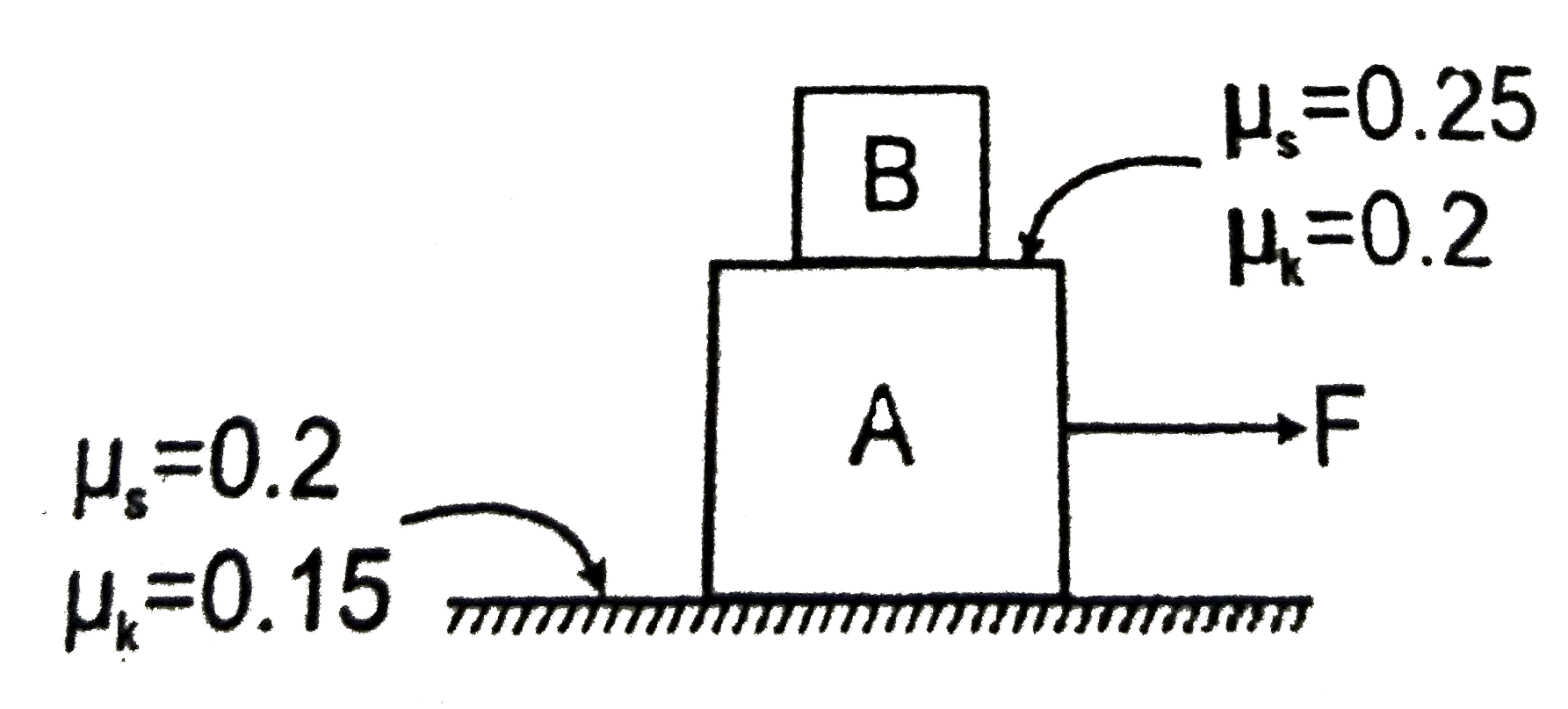
The correct Answer is:48N
FBD of B ,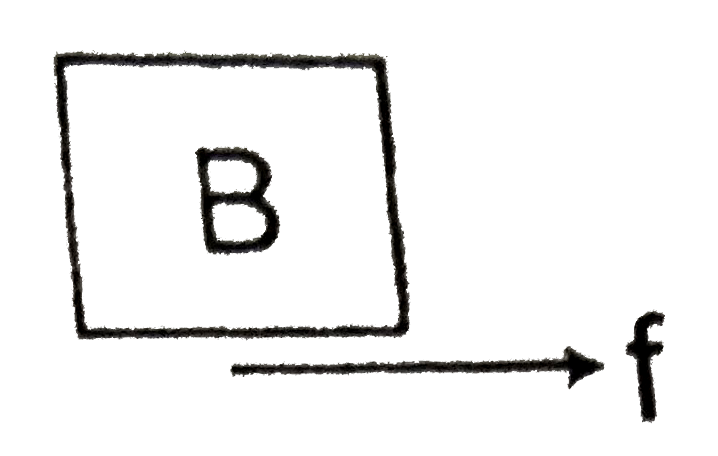
(aB)max=fmaxmB=μSg=2.5m/s2
FBD of combined system
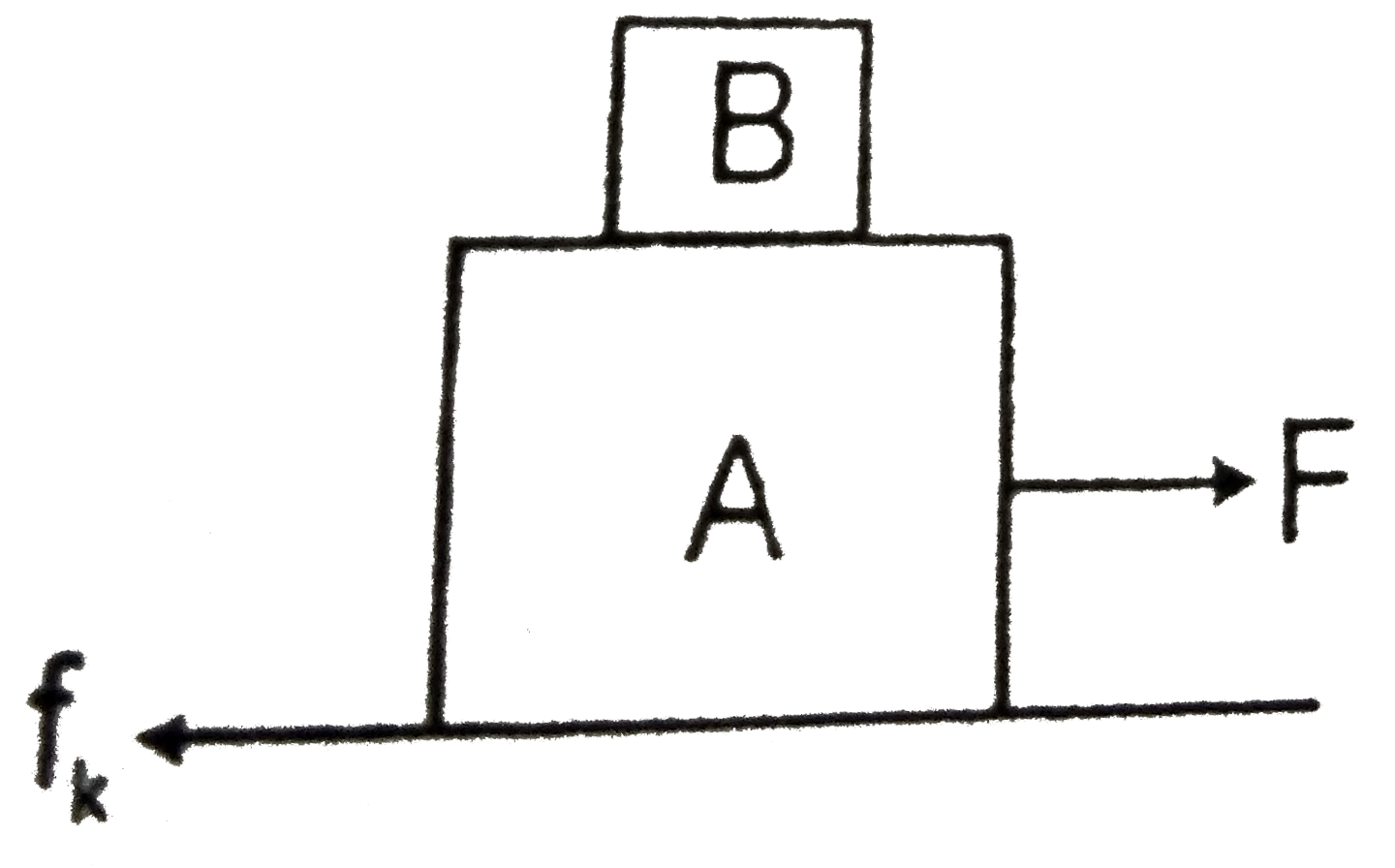
fk=0.15(2+10)g=18N
Fmax−fk=(mA+mB)(aB)max
⇒Fmax=tk+12×2.5=48N.Ans.48N.
Topper's Solved these Questions
- BOOK - RESONANCECHAPTER - DAILY PRACTICE PROBLEMSEXERCISE - DPP 655videos
DAILY PRACTICE PROBLEMS
- BOOK - RESONANCECHAPTER - DAILY PRACTICE PROBLEMSEXERCISE - dpp 664videos
DAILY PRACTICE PROBLEMS
- BOOK - RESONANCECHAPTER - DAILY PRACTICE PROBLEMSEXERCISE - dpp 635videos
DAILY PRACTICE PROBLEMS
- BOOK - RESONANCECHAPTER - CURRENT ELECTRICITYEXERCISE - Exercise54videos
CURRENT ELECTRICITY
- BOOK - RESONANCECHAPTER - ELASTICITY AND VISCOCITYEXERCISE - Advanced Level Problems9videos
ELASTICITY AND VISCOCITY
Similar Questions
A block 'A' of mass 1kg is kept on a block 'B' of mass 2kg .Block A is imparted a velocity of 16m/s at t=0.If the coefficient of friction between A and B is 0.2, find the time (in sec) after which momentum of A and B relative to ground will be equal.(Take g=10m/s^(2) ).
View SolutionA block of mass m is placed on another block of mass M lying on a smooth horizontal surface as shown in the figure. The co-efficient of friction between the blocks is μ. Find the maximum horizontal force F (in Newton) that can be applied to the block M so that the blocks together with same acceleration? (M=3kg,m=2kg,μ=0.1,g=10m/s2)
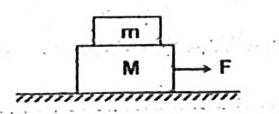 View Solution
View Solution
Knowledge Check
- Question 1 - Select One

Block B of mass 2 kg rests on block A of mass 10 kg. All surfaces are rough with the value of coefficient of friction as shown in the figure. Find the minimum force F that should ber appplied on blocks A to cause relative motion between A and B.(g=10ms2)A24 NB30 NC48 ND60 N - Question 2 - Select One
A block A of mass 100 kg rests on another block B of mass 200 kg and is tied to a wall as shown in the figure. The coefficient of friction between A and B 0.3. The minimum force F required to move the block B is (g=10−2
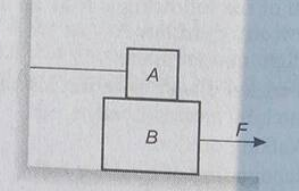 A900 NB200 NC1100 ND700 N
A900 NB200 NC1100 ND700 N - Question 3 - Select One
A block A of mass 100 kg rests on another block B of mass 200 kg and is tied to a wall as shown in the figure. The coefficient of friction between A and B 0.3. The minimum force F required to move the block B is (g=10−2
 A900 NB200 NC1100 ND700 N
A900 NB200 NC1100 ND700 N
Two blocks of Masses M and 2M are connected by a spring of stiffness k .The coefficient of friction between the blocks and the surface is mu Find the minimum constant force F to be applied to 2m in order to slide the mass M .
View SolutionA block A of mass 10kg rests on a second block B of mass 8kg. The coefficients of friction at various surfaces are shown in figure. A horizontal force of 100N is applied on upper block at t=0. Determine the velocity of block A relative to block B after 0.01s of application of force. The system is initially at rest. Express your answer in cm/s. Take g=10m/s2.
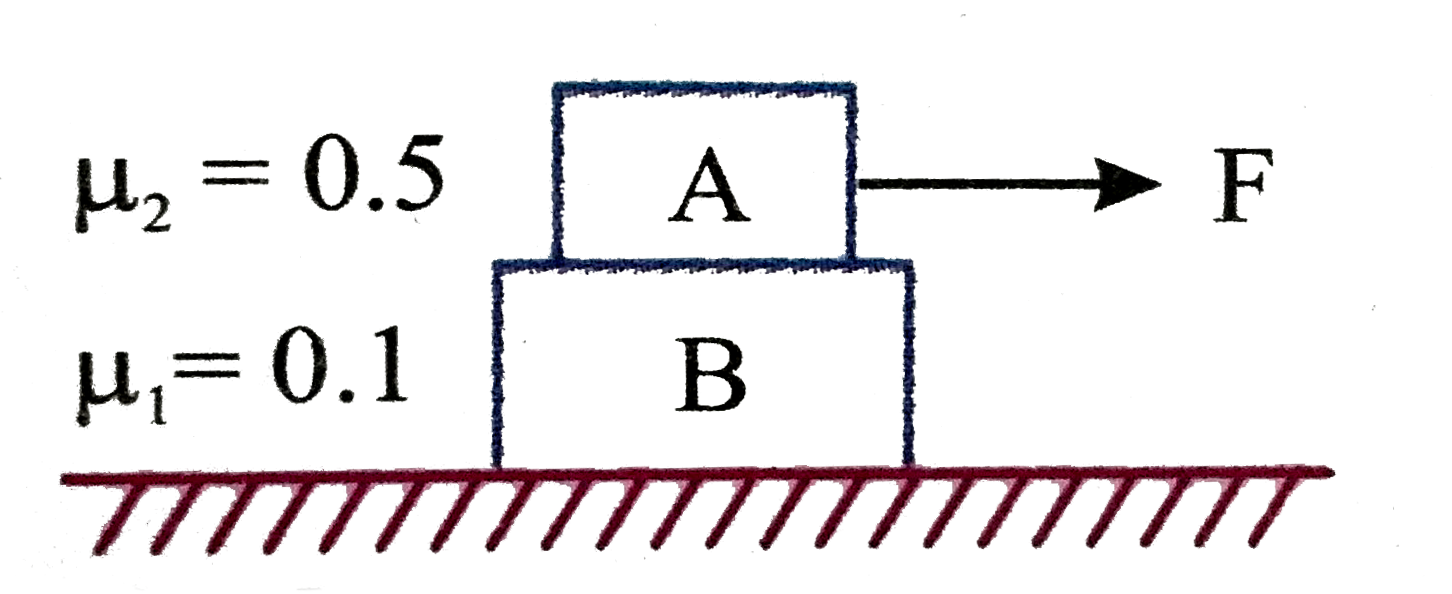 View Solution
View SolutionA block A of mass 2 kg rests on another block B of mass 8 kg which rests on a horizontal floor. The coefficient of friction between A and B is 0.2 while that between B and floor is 0.5. when a horizontal force of 25 N is applied on the block B. the force of friction between A and B is
View SolutionA block of mass m=4kg is placed oner a rough inclined plane as shown in figure. The coefficient of friction between the block and the plane is μ=0.5 . A force F=10N is applied on the block at an angle of 30∘ .
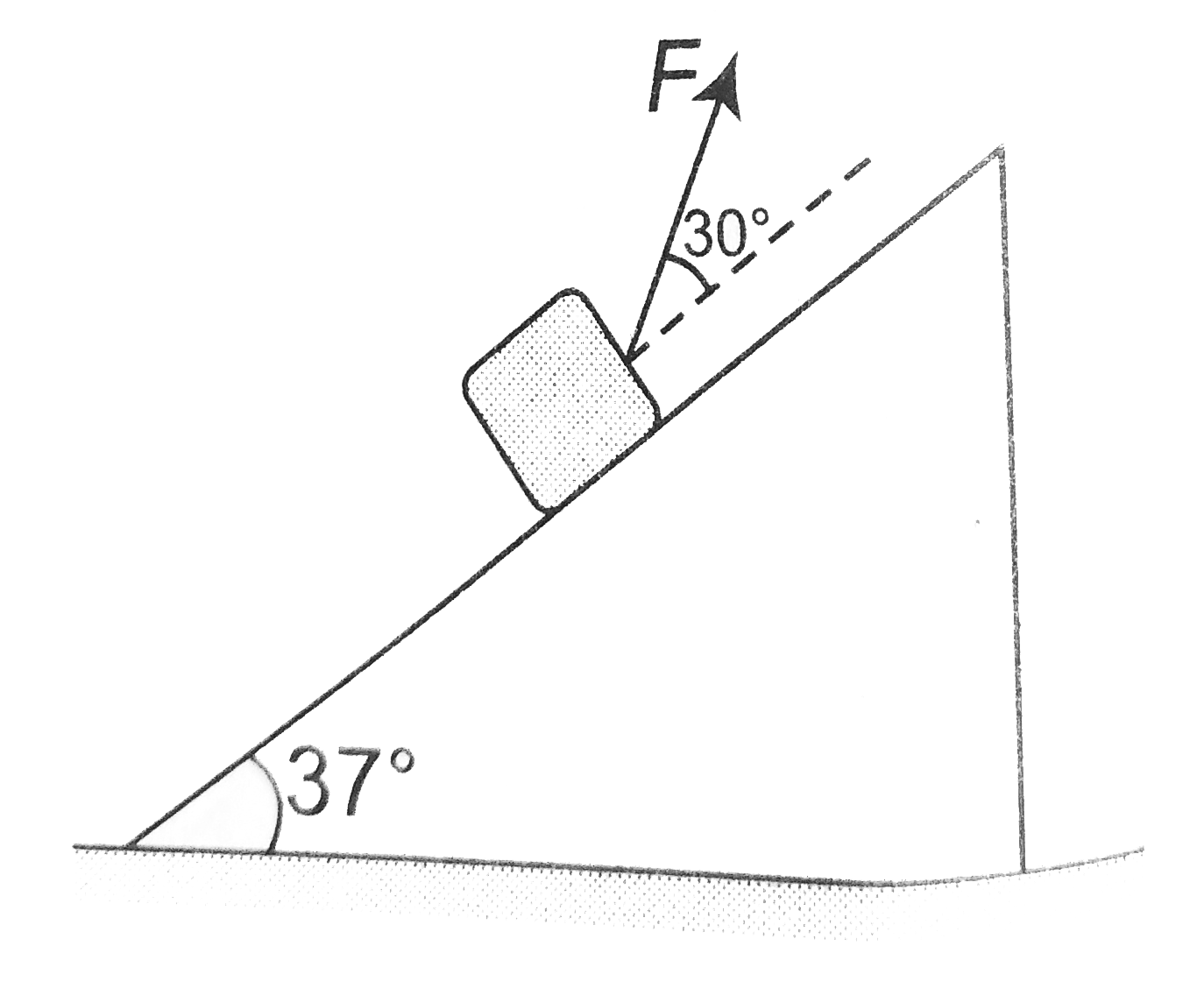 View Solution
View SolutionA block A of mass 2kg rests on another block B of mass 8kg which rests on a horizontal floor. The coefficient of friction between A and B is 0.2 while that between B and floor is 0.5.When a horizontal floor F of 25N is applied on the block B the force of friction between A and B is
View Solution

